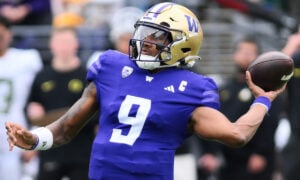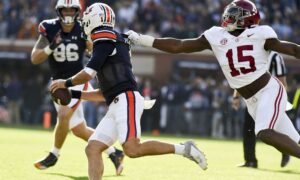Truth About Running Backs: NFC South
This is the next in a series of articles that attempts to shine a light on how various teams really do use their backs and what we can surmise about them going forwards. Today we focus on the NFC South.
This division has a reputation as a pass-happy one, but there’s some really diverse running games here. Let’s delve into them.
Atlanta Falcons
Ugh.
The 2019 Falcons were a deeply dull and uninspiring rushing team. Devonta Freeman is clearly past his best (he’s old in running back years and he’s been beat up), and it never really got going.
The Falcons finished fifth in total offensive yards but 30th in rushing yards. Over the past ten years, this team is 303rd out of 320 teams in rushing yards. They were awful.
The first chart shows overall usage patterns:

Freeman owned the lion’s share of the workload – it was just a very low total of carries and targets which resulted in low productivity.
The next chart shows use by down:

Freeman had just 19 pays on third or fourth down compared to 234 on early downs. He’s a long way from the every-down weapon he was as a younger player.
Carolina Panthers
The Panthers were a bad team, but managed to produce a historically good season for Christian McCaffrey. This chart shows all running backs over the past two seasons in touches versus yards from scrimmage:

McCaffrey destroyed the competition. It’s incredible to see a player put up two straight seasons like he has. No-one wants to see him hurt, but simply staying healthy for all this time has been a minor miracle. It’s hard to not see his current value as his likely career peak.
It’s tough to look at McCaffrey’s season and not find incredible things but have a look at this chart:

He managed to rack up over 1,000 yards purely on plays that went for ten yards or more. Only 26 running backs in 2019 managed to hit that many total yards from scrimmage.
With some running backs (it rends to be smaller ones or backs who catch a lot of passes), there tends to be a belief that they do all their work running outside. The old myth that you have to be big to play between the tackles endures. The following chart shows McCaffrey’s rushing volume by gap:

As you can see, he was very much an inside runner with about 60 percent of his rushing happening in the A and B gaps.
New Orleans Saints
The Saints were one of the very best teams in the NFL last season and deserved a better end to their playoff run. The first chart shows use of their two main backs by down:

The thing to note here is how even usage was on early downs. Alvin Kamara managed just over 55 percent of RB plays on first and second down. He did miss a couple of games (in which Latavius Murray had lots of opportunities), but the average starting back misses about three games. Kamara was actually healthier than “normal.” He’s an electric player, but he’s never been a really high volume back and this is a concern.
Another common belief is that Murray carried the ball while Kamara caught passes.

That’s true to an extent but the difference is not as pronounced as people think. Murray had around 23 percent of his volume through the air and it was 36 percent for Kamara. Sean Payton is smart. He’s not that predictable.
Tampa Bay Buccaneers
Because the Buccaneers were a bad rushing team (only five other teams managed fewer average yards per rush), no one paid much attention to them beyond dynasty owners who had invested in Ronald Jones a year before. He had some good news stories and certainly was a lot better than he was as a rookie, but it’s worth noting he in no way won a big job. This chart shows how the team used their backs:

Jones and Peyton Barber shared volume as rushers. Jones had a few more targets, but Dare Ogunbowale was the top receiving back.
Yet somehow Jones still got all the attention. I believe the next two charts show why. The first shows the number of plays for each back split by yards gained. It’s relatively similar for Jones and Barber but Jones did manage more big plays.

The next chart shows the cumulative yards gained on those plays:

Wow. Those extra 20 big plays went for 541 yards, nearly as many as Barber’s total of 585 yards.
It’s tempting to believe that Jones can sustain this as some sort of big play specialist, but it’s vanishingly unlikely. Big plays are notoriously unstable across seasons as they require so many other things to happen that are outside a running back’s control. The top back in 2018 for breakaway plays was Saquon Barkley and lots of people thought he’d consistently be able to rip them off. That did not happen in 2019.
Now you’ve got a little bit more information on how some of the backs in the NFC South were used in 2019 and you can use that information to make better decisions about how they’ll be used in the future.
Thanks for reading.
- Ten IDP Fantasy Football Stats You Need to Know after Week 16 - December 29, 2023
- Ten IDP Fantasy Football Stats You Need to Know after Week 15 - December 22, 2023
- Ten IDP Fantasy Football Stats You Need to Know after Week 14 - December 14, 2023


































































